|
The Making of Max Ernst, 1946
This double exposure, Max Ernst, 1946, is probably the most recognized work
by the master photographer, Frederick Sommer.
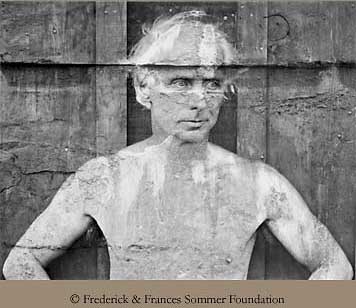
Max Ernst, 1946, trimmed 8x10-inch contact print
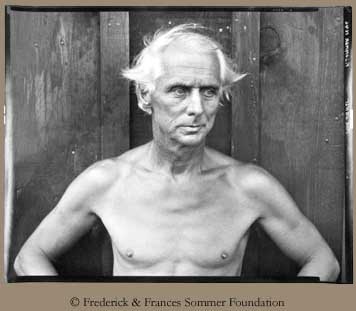
Proof of from one of the two negatives used in creating
the portrait of ‘Max Ernst’ 1946
Untrimmed 8x10-inch contact print
Printing two separate 8x10-inch negatives onto a single sheet of photographic paper
makes Frederick Sommer’s famous portrait of Max Ernst, 1946. This proof print is from
the negative of a portrait Fred took of Max standing in front of the bat and board
exterior of Ernst’s Sedona cabin. Sommer was not satisfied with this image; Max had kept
his head perfectly still during the one-second exposure, but had taken a slight breath,
creating areas of soft-focus in his chest and shoulders.
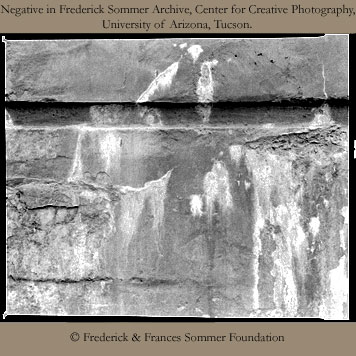
Proof of the second negative, the wall, used in creating the portrait
of ‘Max Ernst’ 1946
Untrimmed 8x10-inch contact print
This proof is from the second negative that comprises the portrait
of Max Ernst, 1946 by Frederick Sommer. It is a photograph taken of a
cement wall near Prescott, Arizona. The white marks (efflorescence)
are created as water seeps through the cement and evaporates.
Sensitive to found drawings in nature, Sommer recognized this
interesting abstraction. “We must honor gravity on all occasions”
Frederick Sommer.
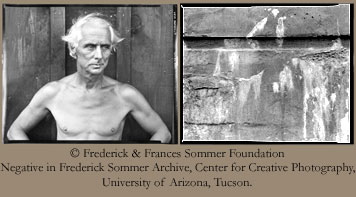
Printing Max2 with Frederick Sommer, 1991, “Watching this double exposure print
develop was a wonderful visual experience,” Naomi Lyons (assistant to Sommer,
1985-1999).
The wall negative was the first exposure, 30-seconds at f/8 (Omega
D2 enlarger with a ground condenser lens and 150w bulb), on
Chlorobromide gelatin silver paper (Forte Fortezo). This negative was
remarkably dense and still contrasty. The exposure required extensive
dodging and burning along the edges, particularly on the bottom.
Once all this work was done, the wall negative was removed and the Max
negative placed in the printing frame. The paper (already exposed with
the ‘wall’ negative) is positioned, slightly askew on to the Max
negative (there were three generations of registration devices
attached or bored into both of these negatives) and exposed for
19-seconds with a moderate dodge followed by minimal burns. The paper
developer, a simple Amidol formula was used half-strength at 70°F
(full strength formula 1L = 30gm Sodium Sulfite, 6 grams Amidol, .8
grams Potassium Bromide). Developed in a slightly larger than
8x10-inch tray, with minimal agitation for 1-minute 20-seconds, it was
then placed in a clean water bath (86°F) for 40-seconds. After
examining the print dry, Sommer used Farmer’s Reducer to fine tune his
silver prints by removing densities in specific areas with masterful
brushwork.
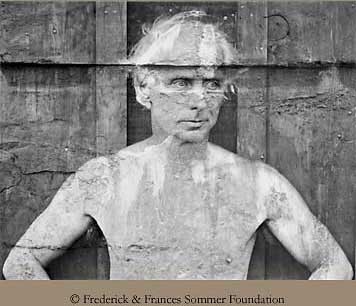
[ RETURN TO TOP ]
|

